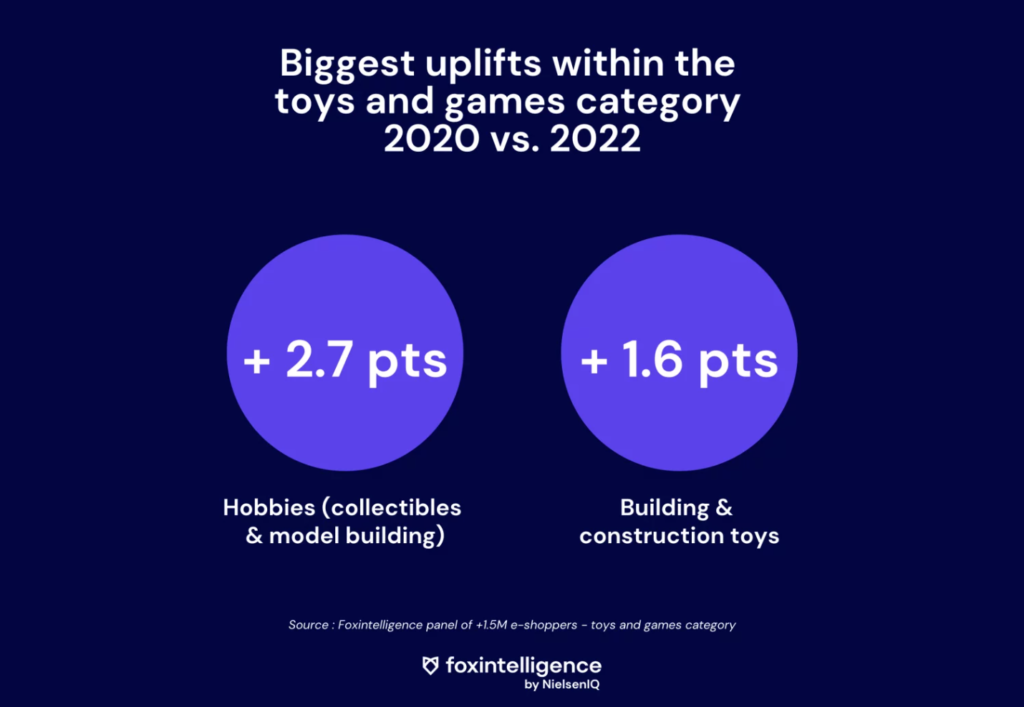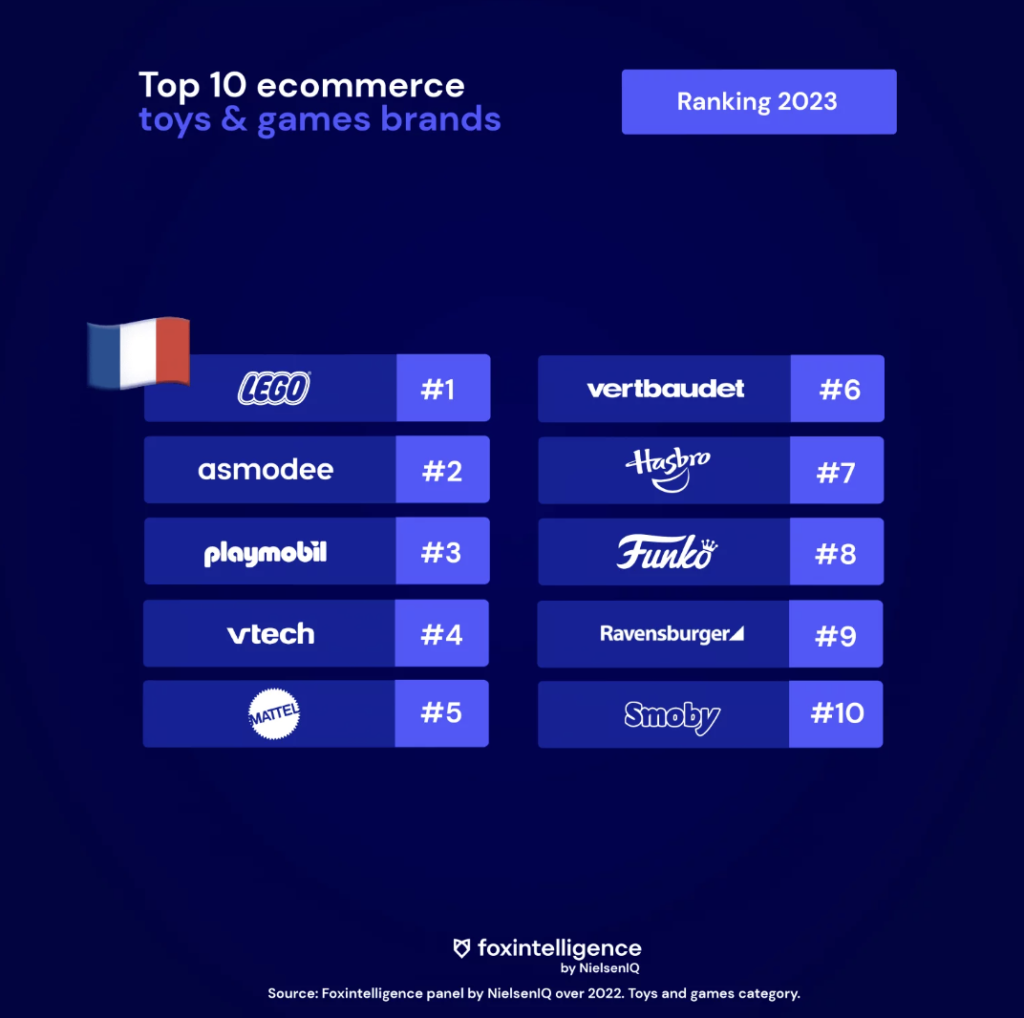The share of the games and toys category in e-commerce remained stable between 2021 and 2022, at 2.5% of total sales.
2021 was a record-breaking year for the toy sector, with sales surging during lockdowns. In 2022, purchases stabilized due to inflationary pressures, causing online shoppers to be more cautious about their spending. This trend of reduced but more selective consumption extended to games and toys, as well as other product categories.
The biggest uplifts in the toy category in e-commerce
The most significant growth in the toy category in e-commerce occurred in the “hobbies” sub-category, encompassing collectibles, modeling, and model kits, since 2020. While these products have a history of popularity, they gained even more recognition in recent years.
Construction toys also experienced increased sales since 2020, with a growth of 1.6 percentage points over two years.
In summary, the demand for games that require time and patience surged during lockdowns. Projects with a long-term focus, such as model kits, which demand time and investment, gained popularity and became a long-lasting consumer habit due to the pandemic context.
The “dolls and accessories” sub-category, along with small toy cars, saw decreased sales.
Christmas remains the key time of the year for the toy sector
Christmas remains a crucial period for the toy sector, with November to December accounting for 38% of the year’s online sales value in the category. Christmas continues to be a driving force for sales, especially in the games and toys category.






